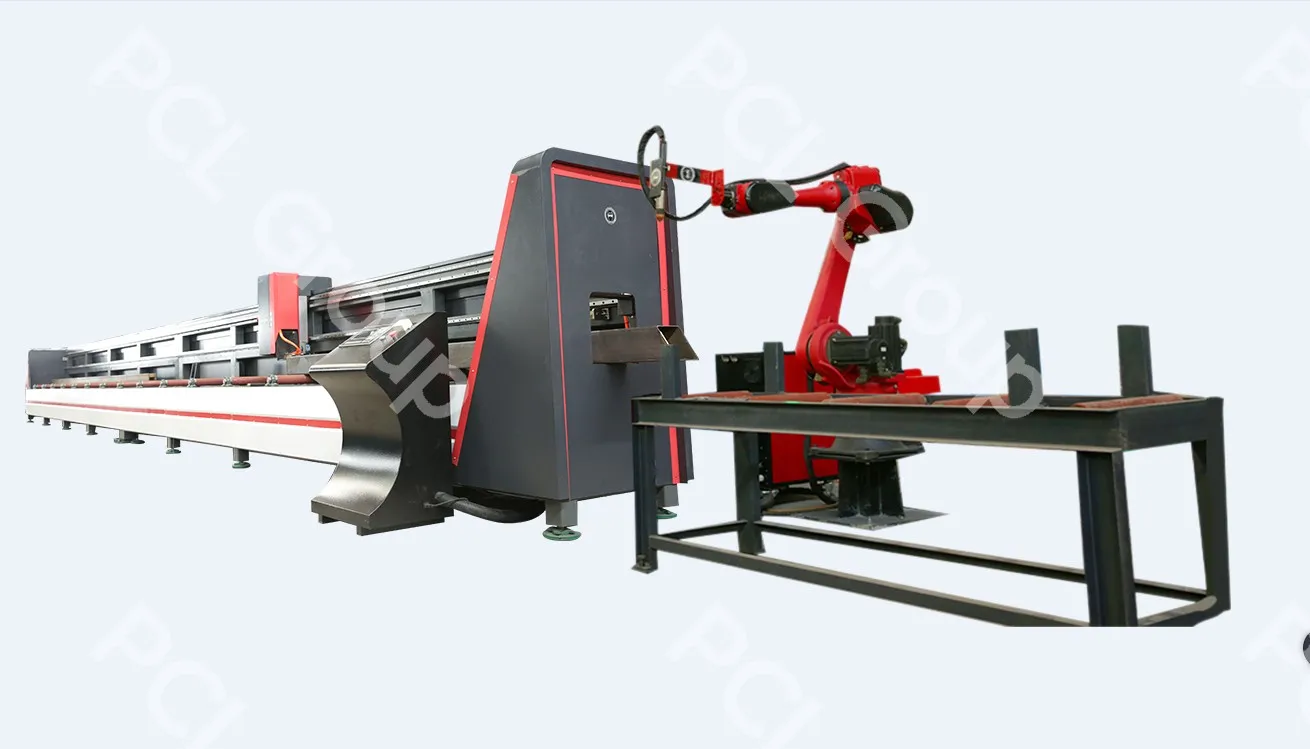Transforming Industries: The Precision and Efficiency of Robotic Laser Cutting

In the evolving landscape of modern manufacturing, innovation is key to staying ahead of the curve. One technology that has significantly transformed various industries is robotic laser cutting. Combining the accuracy of laser technology with the automation potential of robotic laser cutting, this method offers unrivaled precision and efficiency, setting new standards in production processes.
The Science Behind Robotic Laser Cutting
Robotic laser cutting integrates powerful laser beams with robotic arms, enabling the automation of cutting tasks with high accuracy. The laser beam, guided by a programmable robotic arm, can cut through various materials such as metals, plastics, and composites with exceptional precision. The laser’s concentrated heat allows for clean cuts even in the most intricate patterns, while the robotic arm ensures consistent and repeatable movements. This combination results in faster, more efficient cutting processes compared to traditional methods.
Applications Across Different Industries
Automotive Industry
In the automotive industry, the need for precise and efficient manufacturing processes cannot be overstated. Robotic laser cutting is extensively used for producing complex components, such as body panels and intricate engine parts. The technology allows manufacturers to achieve high levels of accuracy and consistency, critical for meeting safety and performance standards. Moreover, the speed at which robotic laser cutting operates reduces production times, enabling faster delivery of vehicles to the market.
Aerospace Industry
The aerospace sector, known for its stringent quality requirements, greatly benefits from robotic laser cutting. The technology is employed in the fabrication of lightweight yet robust components, essential for improving fuel efficiency and performance. The precision of laser cutting ensures that parts fit together perfectly, minimizing the margin for error and enhancing the overall safety and reliability of aircraft.
Medical Device Manufacturing
In the medical field, the demand for precision is paramount. Robotic laser cutting is instrumental in the production of medical devices such as surgical instruments, implants, and prosthetics. The ability to cut detailed shapes and fine features makes it possible to produce highly specialized tools and components that meet the strict regulatory standards of the healthcare industry.
Advantages of Robotic Laser Cutting
Unmatched Precision
One of the most significant advantages of robotic laser cutting is its precision. The laser can cut materials with microscopic accuracy, which is crucial for industries where even the slightest deviation can lead to significant issues. This precision reduces material waste, leading to cost savings and more efficient use of resources.
Increased Efficiency
Robotic laser cutting dramatically improves production efficiency. The automation of cutting processes reduces the need for manual intervention, minimizing human error and increasing throughput. The speed of laser cutting, combined with the continuous operation of robotic systems, allows for higher output rates, making it an ideal solution for high-volume manufacturing.
Flexibility and Versatility
Robotic laser cutting systems offer unparalleled flexibility. They can be programmed to cut a wide range of materials and shapes, making them suitable for various applications across different industries. This versatility means that manufacturers can quickly adapt to changing production needs without significant downtime or retooling costs.
Enhanced Safety
The automation of laser cutting processes also enhances workplace safety. By reducing the need for manual handling of cutting tools and materials, the risk of accidents and injuries is significantly lowered. Additionally, robotic systems can operate in hazardous environments where it would be unsafe for human workers, further improving overall safety standards.
The Future of Robotic Laser Cutting
As technology continues to advance, the capabilities of robotic laser cutting are expected to expand even further. Innovations in robotics and laser technology will likely lead to even greater precision, efficiency, and versatility. Integration with other advanced manufacturing technologies, such as additive manufacturing and AI-driven process optimization, could unlock new possibilities for complex and customized production.
In conclusion, robotic laser cutting is revolutionizing industries by offering unmatched precision and efficiency. Its applications across automotive, aerospace, medical, and other sectors demonstrate its versatility and transformative potential. As the technology continues to evolve, it will undoubtedly play an increasingly vital role in modern manufacturing, driving innovation and competitiveness in the global market.